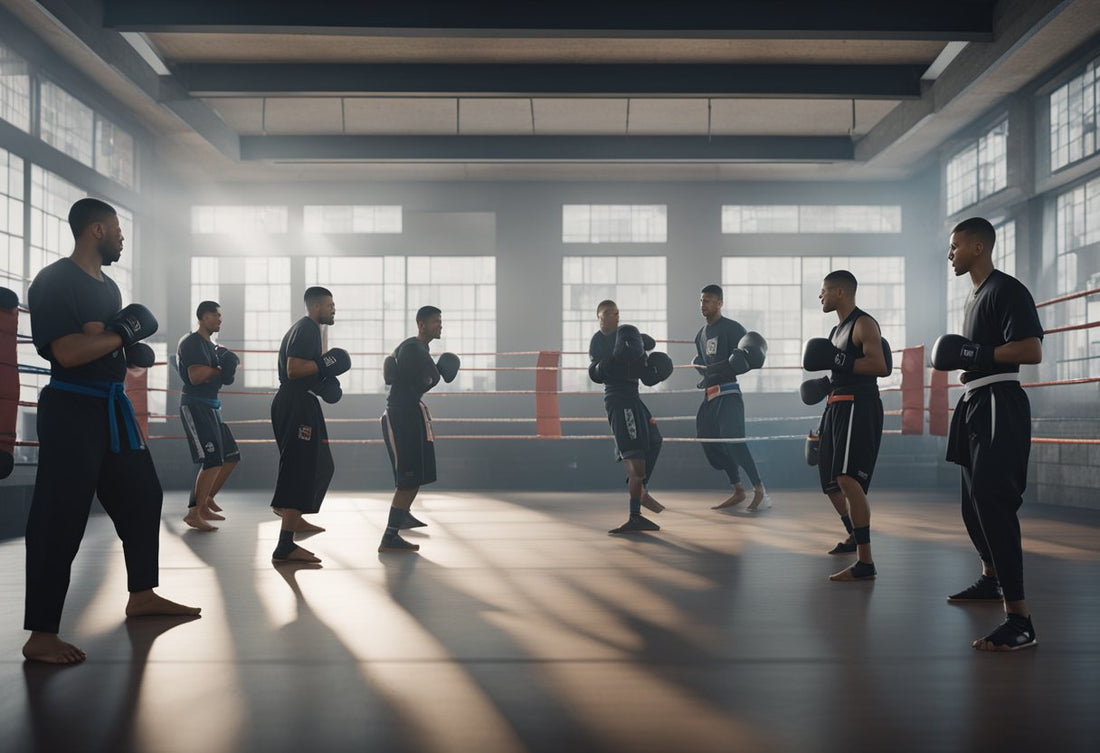
Getting Started With K1 in 2024
Share
K1 Kickboxing in 2024: Striking Clinic's Guide to Getting Started (Before You Get Knocked Out)
So, you've decided to take up K1 kickboxing in 2024? Congratulations! You're in for a fun and challenging experience that will not only get you in great shape but also teach you valuable self-defence skills. And what better place to start your journey than at Striking Clinic!
At Striking Clinic, you'll find a welcoming and supportive community of fellow kickboxers of all levels, from beginners to pros. We will guide you through every step of your training, helping you master the fundamentals of K1 kickboxing and develop your technique and strength. And don't worry if you've never done martial arts before – the classes are designed to be accessible to everyone, regardless of their fitness level or experience.
But let's not forget the most important thing – K1 is a whole lot of fun! There's nothing quite like the feeling of landing a perfectly executed kick or punch, or the rush of adrenaline you get from sparring with a partner.
The Basics of K1 Kickboxing
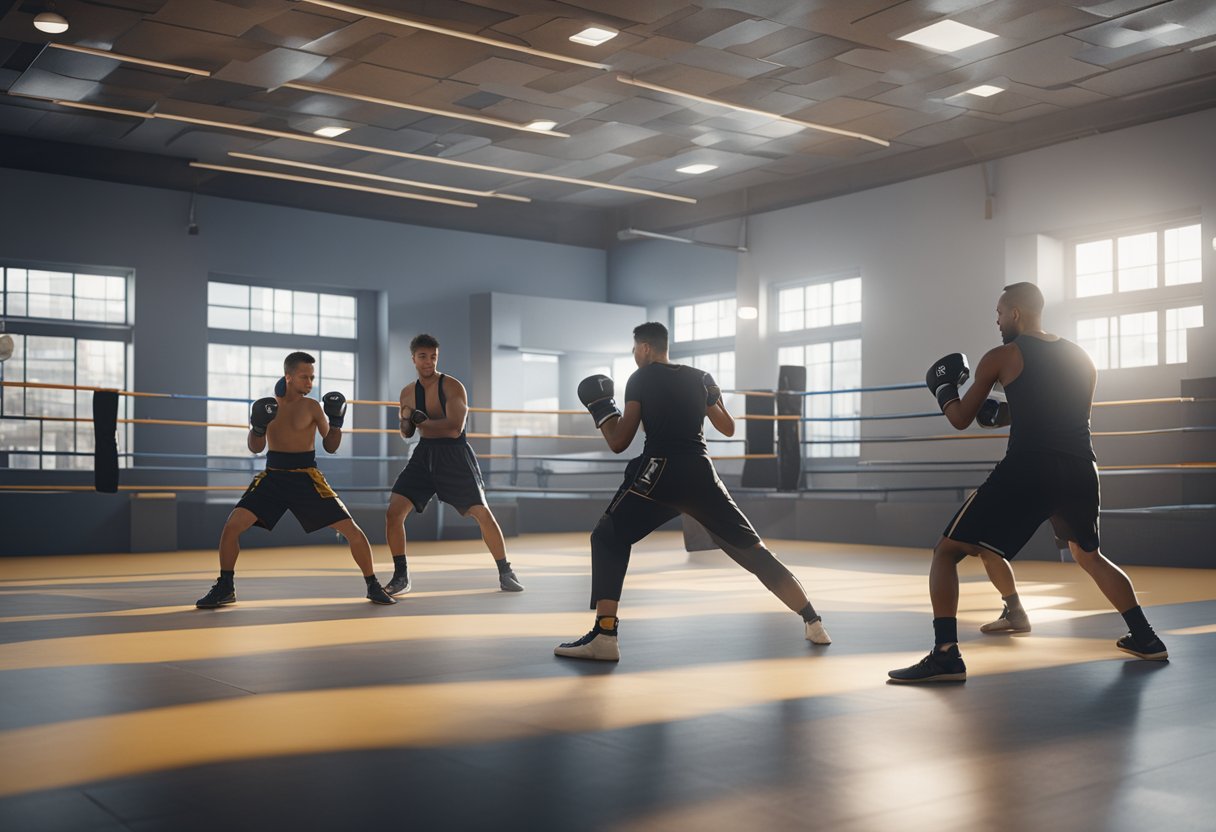
If you're looking for a new and exciting way to get in shape, learn an effective discipline and challenge yourself. Kickboxing might be just what you need. In this section, we'll cover the history and evolution of K1 kickboxing, as well as the rules and scoring system.
History and Evolution
K1 kickboxing is a martial art that originated in Japan in the early 1990s. It was created by Kazuyoshi Ishii, a former karate champion who was looking for a way to bring together different martial arts styles in a single competition. The name "K1" comes from the fact that the competition was held in a ring with four ropes, which resembled the letter "K" when viewed from above.
Over the years, K1 kickboxing has evolved into a global phenomenon, with events held all over the world. In 2012, K1 Global Holdings Limited was established to oversee the organisation and promotion of K1 kickboxing events.
K1 Rules and Scoring
K1 kickboxing has a simple and easy-to-understand set of rules. Fighters compete in a square ring wearing boxing gloves and shorts. Each match consists of three rounds, with each round being three minutes long. The rest period between the rounds is one minute.
The scoring system in K1 kickboxing is based on the number of effective strikes landed, as well as the level of aggression and dominance displayed by the fighter. A fighter can score points by landing punches, kicks, knees, and elbows on their opponent. The fighter who scores the most points at the end of the match is declared the winner.
In case of a draw, there is one extra round. If the match is still tied after the extra round, the judges will determine the winner based on the fighter's overall performance throughout the match.
Now that you know the basics of K1, it's time to step into the ring and start training. At Striking Clinic, we offer comprehensive kickboxing classes that cater to beginners and advanced fighters alike. So what are you waiting for? Put on your gloves, and let's get started!
Getting Your Kit Sorted

Essential Gear
First things first, you need to invest in some essential gear. Here's a list of items you'll need to get started:
- Gloves: You'll need a good pair of gloves to protect your hands and wrists. Make sure they fit snugly and are of good quality. We recommend 12-16 oz gloves for beginners.
- Shorts: You need shorts that are comfortable and allow you to move freely. Avoid wearing anything too tight or restrictive.
- Hand wraps: Hand wraps are essential for protecting your hands and wrists. They also help to keep your gloves in place. Make sure you wrap your hands correctly to avoid injury.
- Mouthguard: You don't want to lose any teeth in the ring, do you? Invest in a good mouthguard to protect your pearly whites.
- Headgear: While not essential, headgear can help to protect your head and face from blows. We recommend investing in a good quality headguard if you're serious about the sport.
- Protective gear: Depending on your level of experience, you may need additional protective gear such as shin guards, elbow pads, or knee pads. Talk to your instructor to find out what you need.
Dressing the Part
Now that you've got your essential gear sorted, it's time to dress the part. Here are a few tips:
- Clothing: Wear comfortable, breathable clothing that allows you to move freely. Avoid anything too tight or restrictive.
- Boxing gloves: If you're serious about the sport, invest in a good pair of boxing gloves. They'll last longer than regular gloves and provide better protection.
- Shoes: You don't want to be slipping and sliding around the ring, so invest in a good pair of shoes with good grip.
Remember, your safety is paramount. Don't skimp on gear or clothing just to save a few quid. Invest in quality items that will protect you and last a long time. And most importantly, have fun!
Mastering the Fundamentals
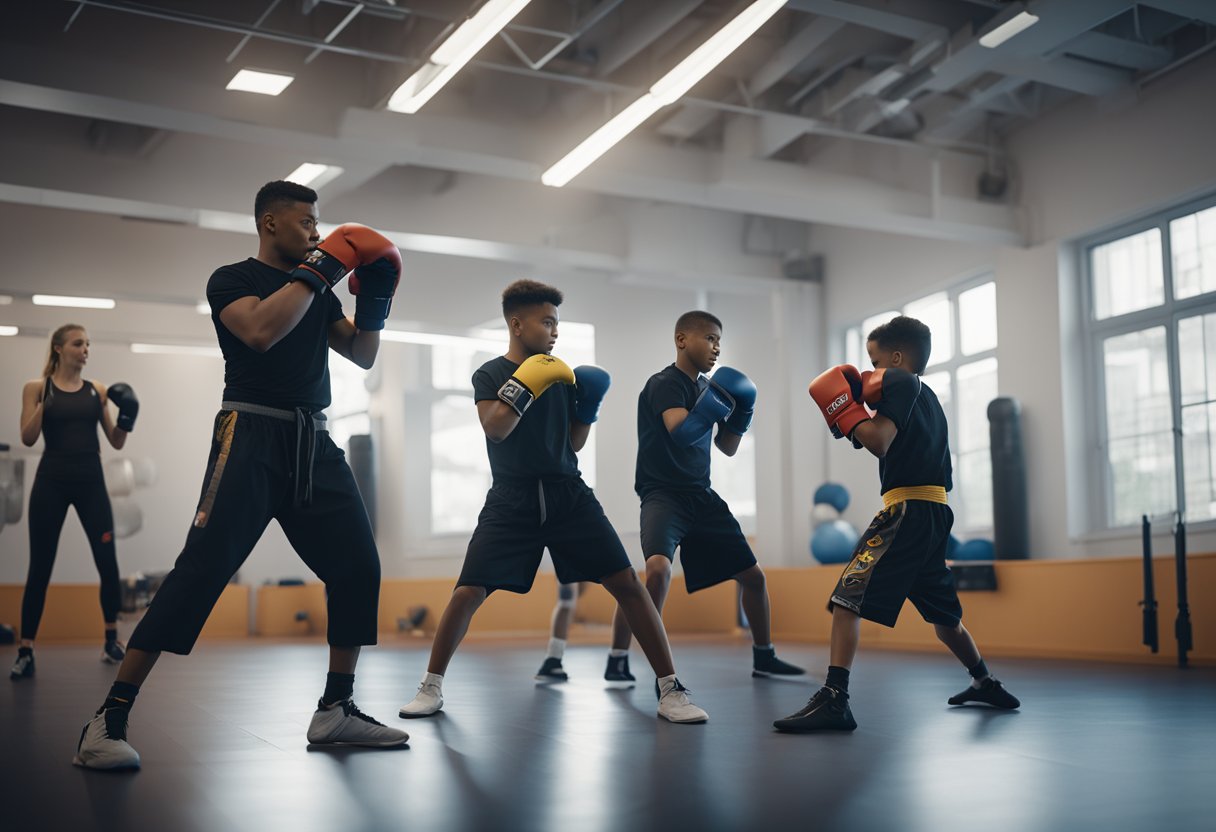
Stance and Movement
Before you start throwing punches and kicks, you need to get your stance and movement right. This will help you maintain balance and stability, and make it easier to execute your strikes with power and accuracy.
Your stance should be shoulder-width apart, with your feet pointing forwards. Your weight should be evenly distributed between both feet, and your knees should be slightly bent. Keep your hands up in front of your face, with your elbows tucked in.
When it comes to movement, you want to be light on your feet. Keep your weight on the balls of your feet, and move around the ring using small, quick steps. Don't cross your feet over each other, as this will make you off-balance and vulnerable to attack.
Basic Strikes
Once you've got your stance and movement down, it's time to start working on your basic strikes. These are the bread and butter of K1 kickboxing, and you'll use them in almost every fight.
The jab is your most basic punch, and it's used to set up other strikes. It's a quick, straight punch that's thrown with your lead hand. Keep your elbow in and your wrist straight, and aim for your opponent's chin or nose.
The cross is your power punch, and it's thrown with your rear hand. Rotate your hips and shoulders as you punch, and aim for your opponent's jaw or temple. This punch should be thrown with force, but make sure you don't overextend and lose your balance.
Kicks are also an important part of K1 kickboxing. The front kick is a quick, snappy kick that's thrown with your lead leg. Aim for your opponent's stomach or chest, and make sure you snap your leg back quickly to avoid getting countered.
The roundhouse kick is a more powerful kick that's thrown with your rear leg. Pivot on your lead foot as you kick, and aim for your opponent's body or head. This kick takes a bit more time to execute, so make sure you set it up properly.
With these basic strikes, you'll be well on your way to mastering the fundamentals of K1 kickboxing. Remember to practice them regularly, and focus on getting your technique right before you start adding more advanced techniques to your arsenal.
Building Blocks of Fitness
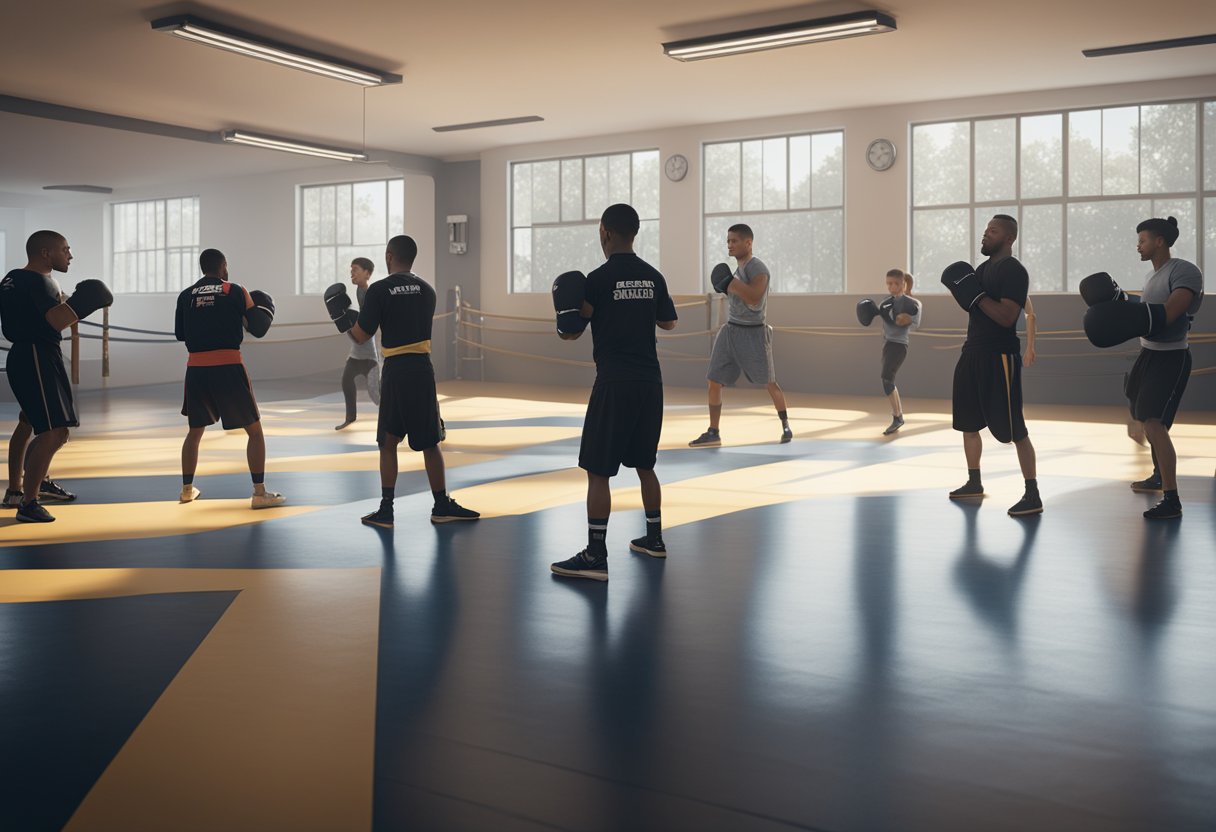
Strength and Conditioning
Strength and conditioning are the building blocks of any fitness regimen. You need to have a strong foundation to build upon. Bodyweight exercises are a great way to build strength, and you don't need any equipment to do them. Push-ups, squats, lunges, and planks are all great exercises that will help you build strength and endurance.
If you want to take your strength training to the next level, you can start lifting weights. Resistance training is a great way to build muscle and increase your strength. Just make sure you start with light weights and work your way up gradually.
Flexibility and Agility
Flexibility and agility are also important components of fitness. K1 Kickboxing requires a lot of flexibility and agility, so you need to make sure you're working on these areas as well.
Stretching is a great way to improve your flexibility. You should stretch before and after your workouts to prevent injury and improve your range of motion. Yoga is also a great way to improve your flexibility and balance.
Agility training involves exercises that improve your ability to change direction quickly. Agility drills like ladder drills, cone drills, and shuttle runs are all great ways to improve your agility.
Remember, building a strong foundation of fitness is essential if you want to succeed in K1 Kickboxing. So, start with the basics and work your way up gradually. With hard work and dedication, you'll be throwing punches and kicks like a pro in no time!
Stepping Into the Ring

Sparring Sessions
One of the best ways to improve your skills is by sparring with other kickboxers. Don't worry if you're a bit nervous at first; everyone has to start somewhere. Just remember to keep your guard up and try to anticipate your opponent's moves.
During sparring sessions, you'll have the opportunity to practice your techniques in a controlled environment. You'll also get to work on your footwork, timing, and distance. Plus, it's a great way to get in some cardio and burn off some steam.
Understanding Rounds
In kickboxing matches, there are typically three rounds, each lasting three minutes with a one-minute rest in between. This may not sound like a long time, but trust us, it can feel like an eternity when you're in the ring.
The key to success is pacing yourself. You don't want to burn out too quickly and leave yourself vulnerable to your opponent's attacks. Try to conserve your energy during the first round and then ramp up your intensity in the second and third rounds.
Remember, kickboxing is as much a mental sport as it is a physical one. Stay focused, stay calm, and most importantly, have fun!
The Mental Game
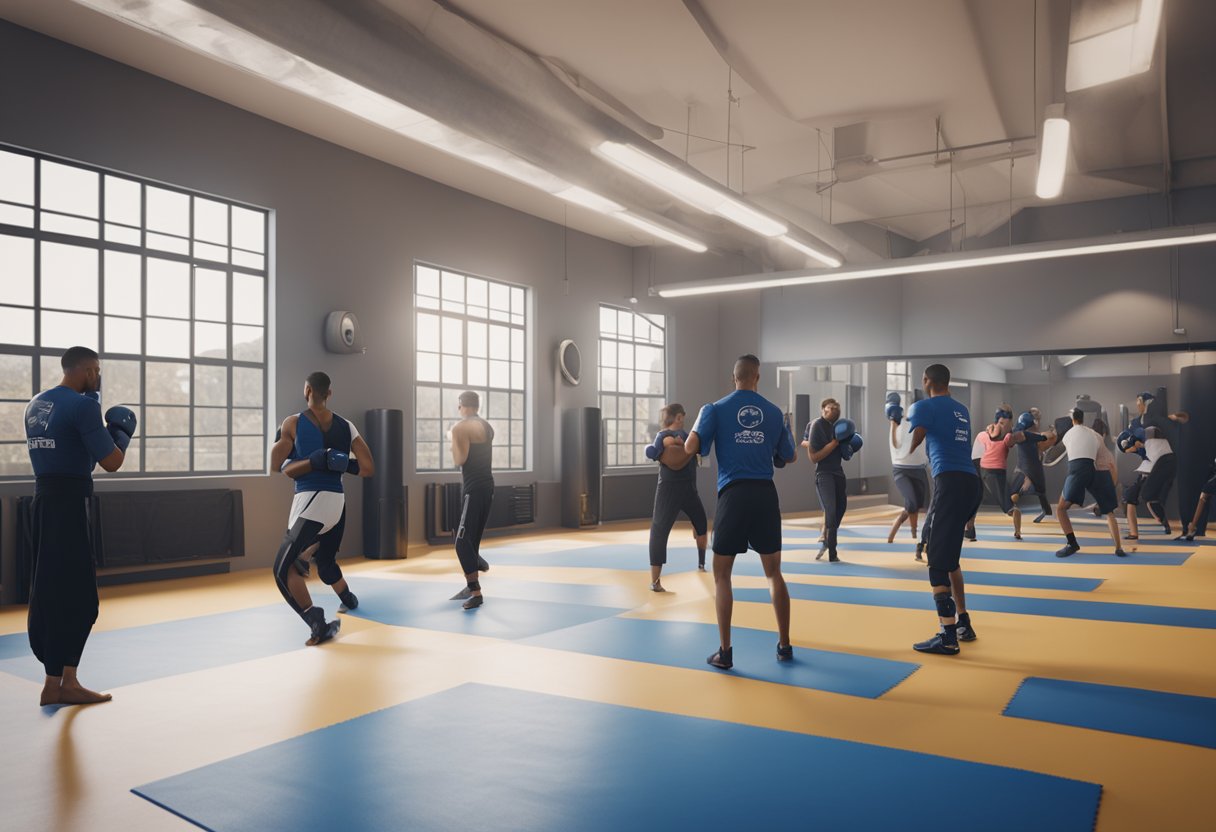
Psychology of Fighting
When it comes to K1 kickboxing, the mental game is just as important as the physical one. You need to be confident in your abilities, but not overconfident. You need to be able to stay focused, but not get tunnel vision. And you need to be disciplined, but not too rigid.
One of the keys to success in the mental game is to stay positive. Don't focus on your mistakes or failures, but instead focus on your progress and successes. Celebrate your small victories along the way, and use them to build your confidence and motivation.
Another important aspect of the mental game is visualisation. Visualise yourself succeeding in your fights, and imagine yourself overcoming any obstacles that come your way. This will help you stay focused and motivated, and will give you the mental edge you need to succeed.
Stress Management
K1 kickboxing can be a stressful sport, both physically and mentally. It's important to have good stress management skills in order to succeed. One way to manage stress is to have a good support system. Surround yourself with positive people who will encourage and motivate you.
Another way to manage stress is to take care of your mental health. Make sure you're getting enough sleep, eating a healthy diet, and taking time to relax and unwind. This will help you stay focused and energised, and will give you the mental clarity you need to perform at your best.
Finally, it's important to stay focused on your goals. Remember why you started K1 kickboxing in the first place, and keep your eye on the prize. With discipline, focus, and a positive attitude, you can overcome any challenge and achieve your dreams.
Next Steps in Your K1 Journey

Entering Competitions
If you're feeling confident in your skills, why not consider entering an amateur competition? It's a great way to put your training to the test and see how you stack up against other fighters. Plus, it's a lot of fun! Just make sure you're properly prepared and have the necessary safety equipment.
Remember, K1 is a sport that requires skill, power, and technique. It's a combination of martial arts including Muay Thai and Karate, so there's always something new to learn. Keep practicing your skills and combinations, and don't forget to work on your reaction time.
And above all, stay safe! Always wear the necessary safety equipment and follow the rules of the sport. With dedication and hard work, you can achieve great things in K1. Who knows, maybe you'll even land a knock-out punch or kick in your next competition!
